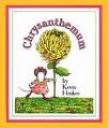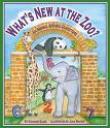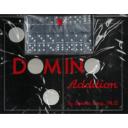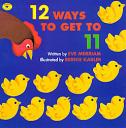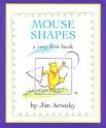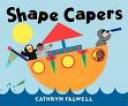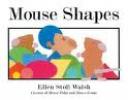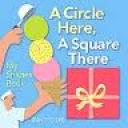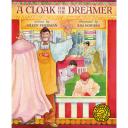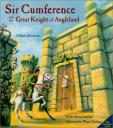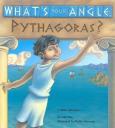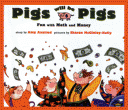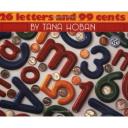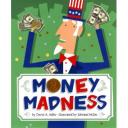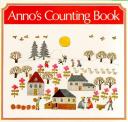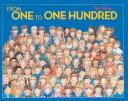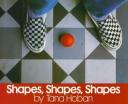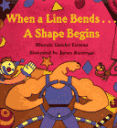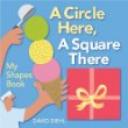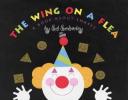INTRODUCTION
The topic is plane geometric shapes and the selected resources listed and briefly summarized below are directly related to accomplishing the learning objectives provided by the VA SOL. Grade one is the level and the associated SOL are 1.12 and 1.13. Additionally, solid geometric shapes such as the sphere, cube, cone, cylinder, pyramid, and rectangular prism will be explored to show similarities and differences when comparing, relating, and recalling prior knowledge of plane geometric shapes.
TEXT ANNOTATIONS
The five books included to directly foster student learning of basic geometry are:
- The Greedy Triangle by Marilyn Burns and illustrated by Gordon Silveria
- A great tool for guiding class discussions on attributes of shapes and enhancing geometry vocabulary, to say the least. Also, the book is good for captivating students’ interest. The silly story is full of excitement and colorful fun illustrations. It’s an even greater resource knowing that Marilyn Burns is the author. She provides ideas for extending student’s learning at the end of the book.
- Three Pigs, One Wolf, and Seven Magic Shapes by Grace Maccarone and illustrated by David Neuhaus
- This book is of a modern day tale of the three little pigs and the big bad wolf. Students will be pleasantly surprised as the story unveils an interestingly happy ending! The book is a great resource for exploring geometric shapes, transformations, and understanding that shapes can be made from other shapes. Interactive tangram ideas are provided in the back of the book.
- The Silly Story of Goldie Locks and the Three Squares by Grace Maccarone and illustrated by Anne Kennedy
- In this story, Goldie Locks is the great-great-granddaughter of the fairy-tale Goldilocks. Throughout her journey, which is very similar to her great-great-grandmother’s, she explores all kinds of shapes and even talks about the “attributes of the shapes”. These attributes can be reviewed and formalized after story time to ensure students understand the concepts as it relates to geometric shapes.
- Cubes, Cones, Cylinders, & Spheres by Tana Hoban
- Throughout this book, photographs of familiar objects found in our everyday lives depict a variety of shapes. The picture book is great for guiding a class discussion on solid shapes and their attributes. Vocabulary terms will be reinforced by students through discussion and exploration of other objects found in our environment. This book is great for all students and especially for LEP students or for those who require additional support.
- A Cloak for the Dreamer by Sandy Riggs and art by Richard Maccabe s
- This book tells a story of a tailor’s three sons who make cloaks for the Archduke to keep out the rain and wind. The sons explore shapes including the rectangle, square, triangle, circle, and hexagon to create the needed cloaks. A couple concepts explored throughout the story include transformations and making shapes from other shapes.
WEB ANNOTATIONS
The five websites included to encourage student exploration and learning are:
Weekly Reader Connections: Grade One, provided by Houghton Mifflin Math:
The above link is age-level appropriate and allows for further exploration of geometry to occur. Specific to geometry, there are 3 online activities and the titles are Shape Pictures, All Colors, Shapes, and Sizes, and Pick the Flowers. The first activity expands students' awareness of shapes found in art or in our everyday lives. The second relates to identifying how the lollipops are the same based on shape, size, and color. The last activity entails students to identify the pattern that comes next in a given sequence.
Harcourt Math Glossary, Grade One
This link provides age-appropriate definitions or illustrations of mathematical terms. It is easy for students to navigate through and explore different terms. ·
A Math Dictionary for Kids by Jenny Eather:
The above link is a comprehensive list of mathematical terms. The provided definitions are wordy but well-described and great for guiding class discussions. Additionally, pictures are provided to enhance definitions.
Math Curriculum Guide for On-line Games
The above link is age appropriate and provides a wide range of games for students that enhance knowledge and skills in math. Games focus directly on geometry for first grade are Four Piece Tangram, Shape Sorter (similar to Concentration), Shape Inlay, Flip It Frenzy, Evan Almighty Arketris (similar to Tetris), and Space Station.
Shape Concentration by NCTM Illuminations
The above website links to a classic fun game. Shape Concentration enhances students' creations of mental images by using spatial memory and visualization. The game is designed for 1 or 2 players.
Geometric Solids by NCTM Illuminations
This on-line tool allows students to manipulate various solid shapes by size, color, position, and transparency. Additionally, the number of faces, edges, and vertices is explored. Identifying plane shapes through solid shapes is further connected.
ADDITIONAL RESOURCES
The link below provides ample opportunities to assessing student understanding of basic and advanced properties of geometry at the first grade level. The activities are designed to simultaneously engage and produce evaluation information of student performance and understanding and this is a huge time saver which creates more time for learning to occur. Rubrics and other assessment ideas are provided. A few examples of lessons with integrated assessment tools include:
Lesson 6: We're The Same!
What do I Really Know About My Shapes?
Shapes, Shapes, Everywhere!
http://www.mcrel.org/pdf/curriculum/5021cm_shapes.pdf
The link below provides various lesson plans for first grade geometry. Lessons of interest include:
Folding Shapes: Are the Sides the Same?"The Greedy Triangle"Geometric Shapes using Kid Pix softwareShape SheetShapes found in an African Village
Most lessons provide ideas for evaluating student understanding. Additionally, the link offers a collection of Inspirational Teacher Stories submitted by educators and information about the online teaching resource, The HotChalk Learning Environment.
http://www.lessonplanspage.com/MathK1.htm
The link below provides ample information for first grade geometry. This website is full of valuable resurces for teachers, students, and parents made available by Houghton Mifflin Math. Examples of resource items for supporting instruction include vocabulary cards, visual support, e-glossary, e-games, graphic organizers, teaching models, background information, weekly reader connections, and worksheets specific to topic and by any of the following: practice, reteach, enrichment, homework, problem solving, and English Learners. A great resource!!!
http://www.eduplace.com/math/index.jsp
The link below provides a customizable, downloadable, worksheet generator for supporting geometry activities and more!
http://illuminations.nctm.org/ActivityDetail.aspx?ID=205
The link below is provided by the VDOE and it relates to Elementary Mathematics. Instructional resources, recommended links to outside resources, and reputable professional organizations are included. An ample supply of valuable information can be found here
http://www.doe.virginia.gov/instruction/elementary_school/math/index.shtml



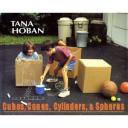




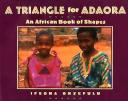
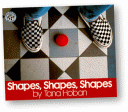
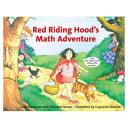 In this interactive math tale, the reader plays a role in choosing how many cookies Little Red Riding Hood gives to the fairy tale characters she meets on her way to Grandma's house. On each page there is a wheel that the reader can turn to change the dialogue and number of cookies to be shared. Readers are encouraged to use copies of the dozen cookies Little Red Riding Hood starts out with to help keep track of the subtracted cookies so some will remain for Grandma!
In this interactive math tale, the reader plays a role in choosing how many cookies Little Red Riding Hood gives to the fairy tale characters she meets on her way to Grandma's house. On each page there is a wheel that the reader can turn to change the dialogue and number of cookies to be shared. Readers are encouraged to use copies of the dozen cookies Little Red Riding Hood starts out with to help keep track of the subtracted cookies so some will remain for Grandma!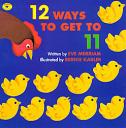 This story starts out by counting to twelve, with the number eleven missing from the list. Throughout the rest of the book, twelve different ways to add to eleven are showcased. Examples of the objects used in the number sentences include the pinecones and acorns on the forest floor, items found on a sailboat, babies, and a mother hen and her hatching chicks. Readers are exposed to a variety of number combinations that all add up to the missing number eleven.
This story starts out by counting to twelve, with the number eleven missing from the list. Throughout the rest of the book, twelve different ways to add to eleven are showcased. Examples of the objects used in the number sentences include the pinecones and acorns on the forest floor, items found on a sailboat, babies, and a mother hen and her hatching chicks. Readers are exposed to a variety of number combinations that all add up to the missing number eleven.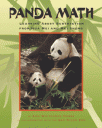 Real photographs of the panda cubs Hua Mei and Mei Sheng grace the pages of this informative non-fiction book. Readers have the option to read only the story of the baby panda cubs or they can learn more about pandas, and subtraction, as they explore the real life math issues on the left-side pages of the book. Some of the interesting math problems include how much less time pandas in the zoo spend eating bamboo compared with those in the wild or how much weight Hua Mei gained in three months. The adorable pictures and engaging facts will surely keep readers interested in both the life of the baby pandas and the math that goes along with it!
Real photographs of the panda cubs Hua Mei and Mei Sheng grace the pages of this informative non-fiction book. Readers have the option to read only the story of the baby panda cubs or they can learn more about pandas, and subtraction, as they explore the real life math issues on the left-side pages of the book. Some of the interesting math problems include how much less time pandas in the zoo spend eating bamboo compared with those in the wild or how much weight Hua Mei gained in three months. The adorable pictures and engaging facts will surely keep readers interested in both the life of the baby pandas and the math that goes along with it!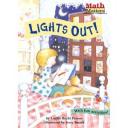 The narrator of this story is a little girl who not only has to go to bed before everyone in her family, but as she notices by the lights on in all of their windows, before everyone in the apartment building across the street. One night she convinces her parents to let her stay up until all of the thirty-two lights across the street have gone out. Throughout the night the narrator describes both some of the fun things she sees, a pillow fight and a parrot for example, as well as the steps she takes in subtracting the lights that go off, until one stubborn light remains.
The narrator of this story is a little girl who not only has to go to bed before everyone in her family, but as she notices by the lights on in all of their windows, before everyone in the apartment building across the street. One night she convinces her parents to let her stay up until all of the thirty-two lights across the street have gone out. Throughout the night the narrator describes both some of the fun things she sees, a pillow fight and a parrot for example, as well as the steps she takes in subtracting the lights that go off, until one stubborn light remains.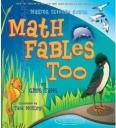 This beautifully and colorfully illustrated book provides readers with fun science facts as they read about different animals. The animals, ranging from one sea horse to ten seagulls, are described through playful rhymes that portray the animals' behaviors done in smaller groups. By breaking down the larger number of each animal, readers are exposed to a variety of different addition facts that add up to the sums one through ten, as they also learn fun facts about a variety of creatures!
This beautifully and colorfully illustrated book provides readers with fun science facts as they read about different animals. The animals, ranging from one sea horse to ten seagulls, are described through playful rhymes that portray the animals' behaviors done in smaller groups. By breaking down the larger number of each animal, readers are exposed to a variety of different addition facts that add up to the sums one through ten, as they also learn fun facts about a variety of creatures!